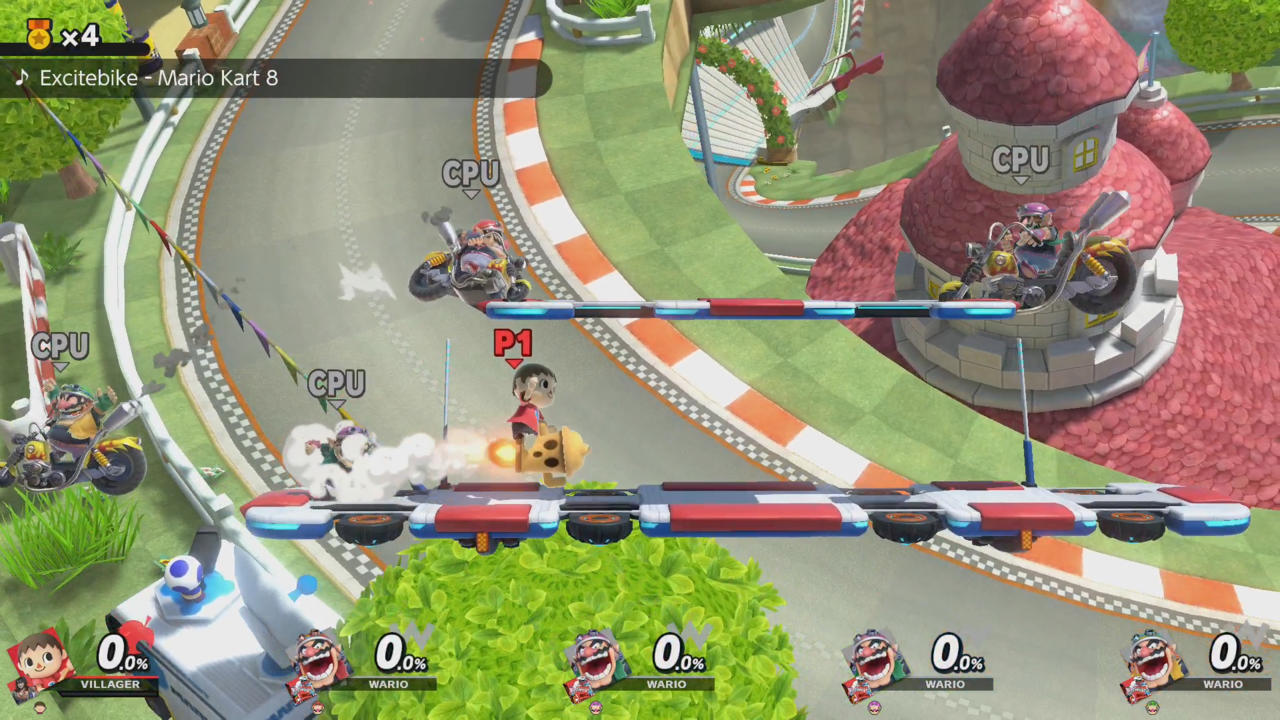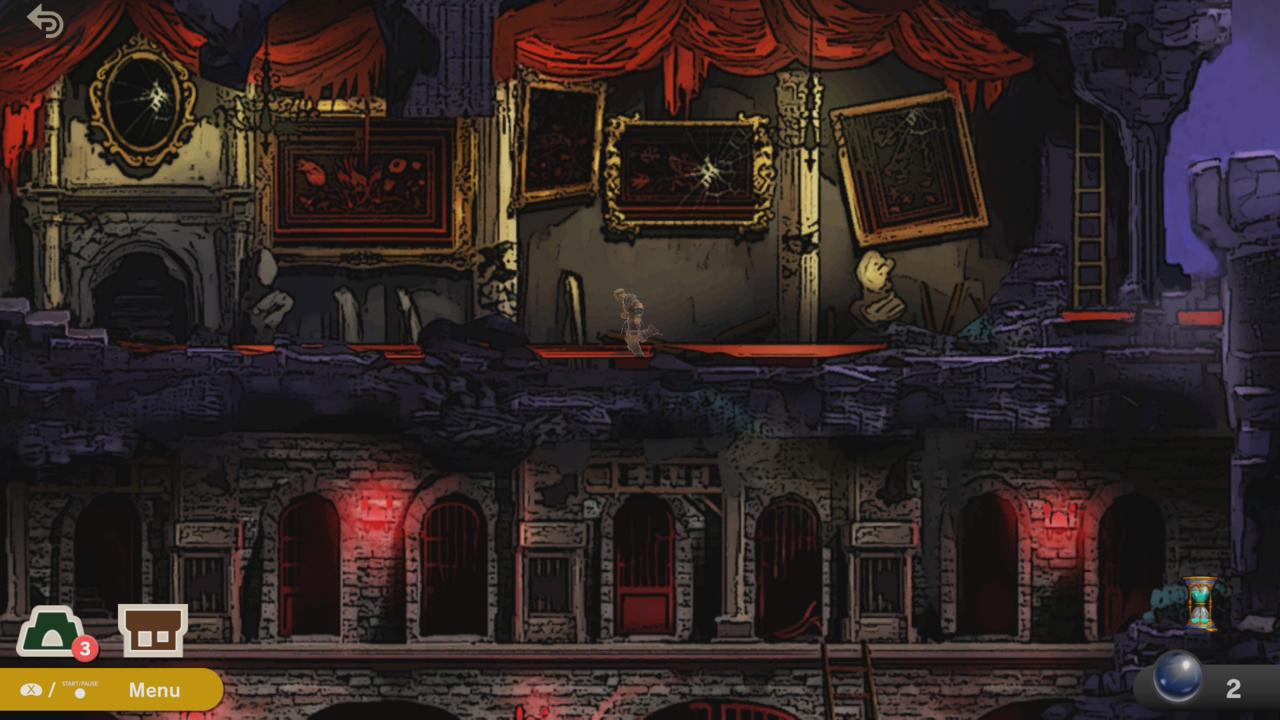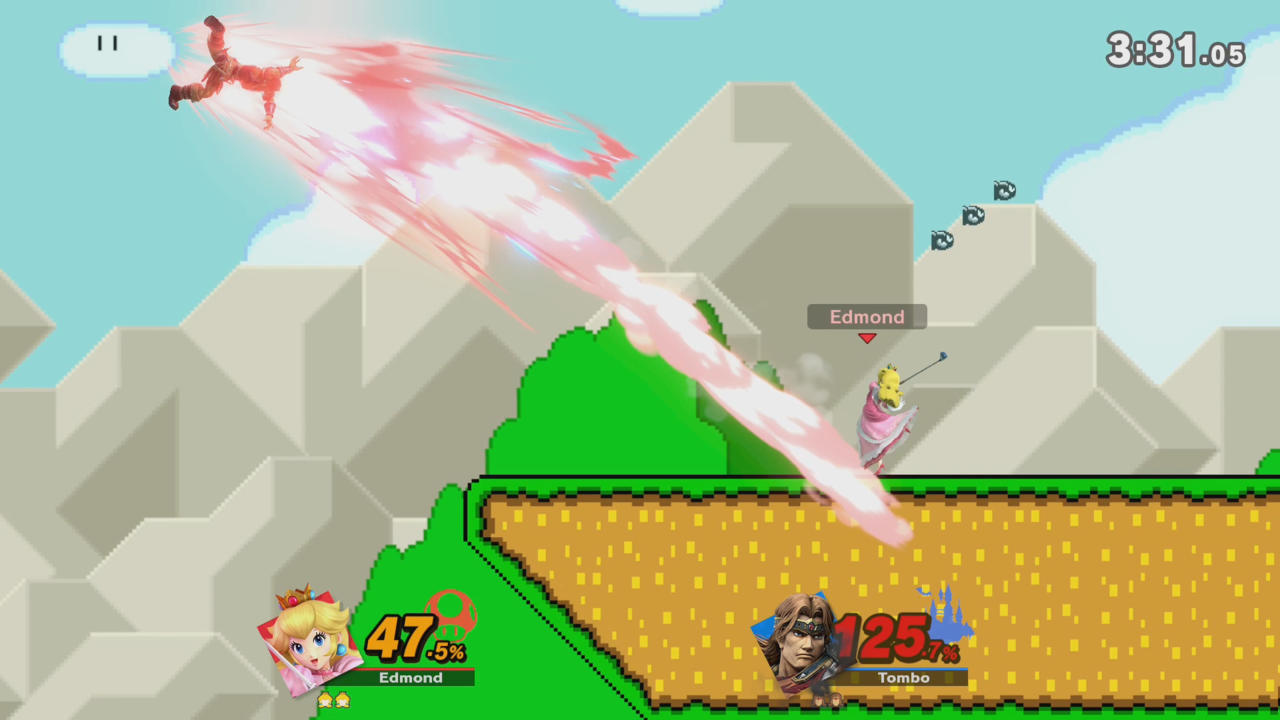The idea of what the Super Smash Bros. games are, and what they can be, has been different things during the series' 20-year history. What began as an accessible multiplayer game also became a highly competitive one-on-one game. But it's also been noted for having a comprehensive single-player adventure, as well as becoming a sort of virtual museum catalog, exhibiting knowledge and audiovisual artifacts from the histories of its increasingly diverse crossover cast. Ultimate embraces all these aspects, and each has been notably refined, added to, and improved for the better. Everyone, and basically everything, from previous games is here--all existing characters, nearly all existing stages, along with the flexibility to play and enjoy those things in different ways. Super Smash Bros. Ultimate is a comprehensive, considered, and charming package that builds on an already strong and enduring fighting system.
If you've ever spent time with a Smash game, then you likely have a good idea of how Ultimate works. Competing players deal damage to their opponents in order to more easily knock them off the stage. The controls remain relatively approachable for a competitive combat game; three different buttons in tandem with basic directional movements are all you need to access a character's variety of attacks and special abilities. There are a large variety of items and power-ups to mix things up (if you want to) and interesting, dynamic stages to fight on (also if you want to). You can find complexities past this, of course--once you quickly experience the breadth of a character's skillset, it allows you to begin thinking about the nuances of a fight (again, if you want to). Thinking about optimal positioning, figuring out what attacks can easily combo off of another, working out what the best move for each situation is, and playing mind games with your human opponents can quickly become considerations, and the allure of Smash as a fighting game is how easy it is to reach that stage.

Complexity also comes with the wide variety of techniques afforded by Ultimate's staggeringly large roster of over 70 characters. Smash's continuing accessibility is a fortunate trait in this regard, because once you understand the basic idea of how to control a character, many of the barriers to trying out a completely new one are gone. Every fighter who has appeared in the previous four Smash games is here, along with some brand-new ones, and the presence of so many diverse and unorthodox styles to both wield and compete against is just as attractive as the presence of the characters themselves. In fact, it's still astounding that a game featuring characters from Mario Bros, Sonic The Hedgehog, Pac-Man, Metal Gear Solid, Final Fantasy, and Street Fighter all interacting with each other actually exists.
On a more technical level, Ultimate makes a number of under-the-hood alterations that, at this early stage, seem like positive changes that make Smash feel noticeably faster and more exciting to both watch and play. Characters take more damage in one-on-one fights; continuous dodging is punished with increased vulnerability; fighters can perform any ground-based attack, including smash moves, immediately out of a running state; and short-hop aerial attacks (previously a moderately demanding technique) can be easily performed by pressing two buttons simultaneously. Refinements like these might go unnoticed by most, but they help define Ultimate's core gameplay as a tangible evolution of the series' core mechanics.
A number of Ultimate's more superficial changes also help Smash's general quality-of-life experience, too. Some make it a more readable game--additions to the UI communicate previously hidden elements like meter charges and Villager's captured items, a simple radar helps keep track of characters off-screen, and a slow motion, zoom-in visual effect when critical hits connect make these moments more exciting to watch. Other changes help streamline the core multiplayer experience and add compelling options. Match rules can now be pre-defined with a swath of modifiers and saved for quick selection later. Stage selection occurs before character selection, so you can make more informed decisions on which fighter to use.
On top of a built-in tournament bracket mode, Ultimate also features a number of additional Smash styles. Super Sudden Death returns, as does Custom Smash, which allows you to create matches with wacky modifiers. Squad Strike is a personal favorite, which allows you to play 3v3 or 5v5 tag-team battles (think King of Fighters), and Smashdown is a great, engaging mode that makes the most of the game's large roster by disqualifying characters that have already been used as a series of matches continues, challenging your ability to do well with characters who you might not be familiar with.
The most significant addition to Ultimate, however, lies in its single-player content. Ultimate once again features a Classic Mode where each individual fighter has their own unique ladder of opponents to defeat, but the bigger deal is World of Light, Ultimate's surprisingly substantial RPG-style campaign. It's a convoluted setup--beginning as Kirby, you go on a long journey throughout a huge world map to rescue Smash's other fighters (who have incidentally been cloned in large numbers) from the big bad's control. Along the way, you'll do battles with Spirits, characters hailing from other video games that, while not directly engaging in combat, have taken control of clones, altered them in their images, and unleashed them on you.
Though there is some light puzzling, the world is naturally filled with hundreds upon hundreds of fights--there are over 1200 Spirit characters, and the vast majority have their own unique battle stages that use the game's match variables to represent their essence. The Goomba Spirit, for example, will put you up against an army of tiny Donkey Kongs. Meanwhile, the Excitebike Spirit might throw three Warios at you who only use their Side+B motorbike attacks.

It may seem like a tenuous idea at first, but these fights are incredibly entertaining. It's hard not to appreciate the creativity of using Smash's assets to represent a thousand different characters. Zero Suit Samus might stand in for a battle with The Boss from Metal Gear Solid 3: Snake Eater by donning a silver-palette costume and fighting you in a flower-filled Final Destination, but she also stands in for the spirit of Alexandra Roivas from Eternal Darkness by using a black-palette costume and fighting you in the haunted Luigi's Mansion stage, with a modifier that makes the screen occasionally flip upside down (Eternal Darkness was a GameCube horror game whose signature feature were "Sanity Effects", which skewed the game in spooky ways to represent the character's loosening grip on reality). If I knew the character, I often found myself thinking about how clever their Spirit battle was.
Defeating a Spirit will add it to your collection, and Spirits also act as World of Light's RPG system. There are two types of Spirit: Primary and Support. Primary Spirits have their own power number and can be leveled up through various means to help make your actual fighter stronger. Primary Spirits also have one of four associated classes, which determine combat effectiveness in a rock-scissors-paper-style system. These are both major considerations to take into account before a battle, and making sure you're not going into a fight at a massive disadvantage adds a nice dimension to the amusing unpredictability of this mode. What you also need to take into account are the modifiers that might be enabled on each stage, which is where Support Spirits come in. They can be attached to Primary Spirits in a limited quantity and can mitigate the effect of things like poisonous floors, pitch-black stages, or reversed controls, or they can simply buff certain attacks.
There are a few Spirit fights that can be frustrating, however. Stages that are a 1v4 pile-on are downright annoying, despite how well-equipped you might be, as are stages where you compete against powerful assist trophies. On the flip side, once you find yourself towards the end of the campaign, there are certain loadouts that can trivialize most stages, earning you victory in less than a second. Regardless, there's a compulsive quality to collecting Spirits, and not just because they might make you stronger. It's exciting to see which obscure character you run into next, feel validated for recognizing them, and see how the game interprets them in a Spirit battle. There's also just a superficial joy to collecting, say, the complete Elite Beat Agents cast (Osu! Takatae! Ouendan characters are here too), even though these trophies lack the frills of previous Smash games.

Some hubs in the World of Light map are also themed around certain games and bundle related Spirits together to great effect--Dracula's Castle from Castlevania, which changes the map into a 2D side-scroller, and the globe from Street Fighter II, complete with the iconic airplane noises, are personal standouts. Despite the dramatic overtones of World of Spirit's setup, the homages you find within it feel like a nice commemoration of the games and characters without feeling like a pandering nostalgia play. One of the most rewarding homages of all, however, lies in Ultimate's huge library of video game music. Over 800 tracks, which include originals as well as fantastic new arrangements, can all be set as stage soundtracks as well enjoyed through the game's music player.
There is one significant struggle that Ultimate comes up against, however, which lies in the nature of the console itself. Playing Super Smash Bros. Ultimate in the Switch's handheld mode is simply not a great experience. In situations where there are more than two characters on screen, the view of the action often becomes too wide, making the fighters too small to see properly, and it can be difficult to tell what you or your opponent is doing. The game's penchant for flashy special effects and busy, colorful stages doesn't help things at all, and unless you're playing a one-on-one match, you'll likely suffer some blameless losses. This is a situational disadvantage and may not affect all players, but it puts a damper on the idea of Smash on the go.
The need to unlock characters also has the potential to be an initial annoyance, especially if your goal is to jump straight into multiplayer and start learning one of the six brand-new characters. In my time with the game, I split my attention between playing World of Light (where rescuing characters unlocks them everywhere) and multiplayer matches, where the constant drip-feed of "New Challenger" unlock opportunities (which you can easily retry if you fail) came regularly. I naturally earned the entire roster in roughly 10 hours of playtime, but your mileage may vary.
Your mileage may also vary in Ultimate's online mode, where the experience of competing against others was inconsistent during the 200+ matches we played. Ultimate matches you with players from your region, but continues to use peer-to-peer style connectivity, which means the quality of the experience relies primarily on the strength of each player's internet connection. A bad connection from any player can result in a noticeable input delay, stuttering, and even freezing as the game tries to deal with latency issues. Things have the greatest potential to go bad during four-player matches, where there's a greater chance of finding a weak link.
There's some blame to be put on the console itself--the Switch only has the capabilities for wifi networking. You can invest in an optional USB LAN adapter to make sure your own connection is stable, but because of the peer-to-peer nature, I found that the experience was just as inconsistent. You can get lucky--I would regularly enjoy sessions filled with smooth matches--but regardless, laggy matches aren't exactly a rare occurrence. It's also worth noting that you're required to have a paid subscription to Nintendo's Switch Online service to be able to play online at all, so the sub-optimal performance of the mode is disappointing.
Network performance aside, Ultimate's online mode does have an interesting way to cater to the large variety of ways to play Smash Bros. You can create public or private arenas for friends and strangers, which serve as personal rooms to dictate specific rulesets, but the primary mode is Quick Play, where you're matched against people of a similar skill level to you. Quick Play features an option where you can set your preferred ruleset--things like the number of players, item availability, win conditions--and it will try to match you up with someone with similar preferences. However, Ultimate also prioritizes getting you into a match in under a minute, which is great, but sometimes means that you might find yourself playing a completely different style of match.

In my experience, I found that there were enough people who wanted to play with my ruleset (one-on-one, three stock, six minutes, no items, Omega stages only) and I would find myself in these kinds of matches, or at least a very close approximation, the majority of the time. Getting thrown into the occasional four-player free-for-all felt like a nice, refreshing change of pace to me, but depending on how flexible you are as a player, this can be a turn-off. But like so much of Ultimate, its multitude of options and styles of play doesn't necessarily mean that all of them will suit every player.
An inconsistent online mode and situational downers don't stop Super Smash Bros. Ultimate from shining as a flexible multiplayer game that can be as freewheeling or as firm as you want it to be. Its entertaining single-player content helps keep the game rich with interesting things to do, as well as bolstering its spirit of loving homage to the games that have graced Nintendo consoles. Ultimate's diverse content is compelling, its strong mechanics are refined, and the encompassing collection is simply superb.







































